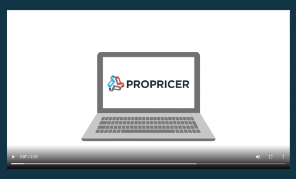Picture this: you’re driving down the highway out of state when your car starts making scary rattling noises. You steer onto the shoulder just moments before the engine sputters and dies. You call a tow truck, and minutes later, you’re sitting in the waiting room of the nearest auto repair shop.
The head mechanic walks in with the bad news: “We need to overhaul your engine. But, unfortunately, it’s going to cost you $5,000.”
You figure it’s your best option because you don’t want to buy a new car for $40,000. So you tell the mechanic to go ahead.
You take your car to your usual mechanic for routine service a few months later. You mention what happened with your engine and how much it cost to repair.
His eyes bug out. “What?! An engine rebuild on a car like yours should only cost $2,500. Instead, that crook marked up the job by 100 percent!”
Wouldn’t you feel ripped off in this situation? Of course, anyone would—including the U.S. Federal Government. That’s why Congress passed the Truth in Negotiations Act (TINA) in 1962. This blog will answer the most common questions government contractors have about TINA. 1
What is the Truth in Negotiations Act?
The Truth in Negotiations Act protects the government from being overcharged by contractors. Under the Act's provisions, any firm that sends the government a contract proposal must back it up with certified cost and pricing data if the procurement process enters the negotiation phase.
In other words, once negotiation begins, the government agency will expect you to submit proof of the costs you expect to incur while completing the job. The most relevant evidence would be invoices from your vendors on similar jobs you recently completed.
TINA also requires you to provide substantiation of your profit margin. Once again, you can turn to your records of recent projects to demonstrate how much your firm earned after expenses.
As with many policies requiring additional research and paperwork, finding loopholes or workarounds for the Truth in Negotiations Act may be tempting. For example, you could ask your potential Contracting Officer (CO) to let you split a $3 million proposal into two $1.5 million proposals, reducing paperwork and delays for both parties. But even if the CO agrees to this approach, it’s still illegal.
According to Part 13.003(c)(2) of the Federal Acquisition Regulation, you can’t break down project requirements just to avoid regulatory thresholds—and that certainly applies to the TINA threshold.
In this scenario, if your agency client later determined that your firm split a project to break free from TINA, the government could still sue your firm for charging inordinately high prices and making an unreasonable profit. 1
What’s the TINA threshold? Are there specific dollar amounts that trigger the requirements?
The good news is that the Truth in Negotiations Act doesn’t apply to every contract you’ll sign with the government. However, it kicks in for contracts and subcontracts with a price tag of at least $2 million (this amount increased from $750,000 in 2018).
TINA also applies to contract modifications totaling at least $2 million. Here’s an unlikely scenario you should keep in mind: Your firm lands a government contract to perform $1.25 million of construction work. Because you’re below the $2 million threshold, you push TINA out of your mind. But then your client cuts $750,000 of work from one area of the project while adding $1.25 million to another area. Even though the new value of the modified contract is $1.75 million, you’ve made $2 million in changes, which is enough to trigger TINA. 2
Are there any TINA exemptions?
As we said above, there are no loopholes for TINA compliance. But according to a resource provided by the Contracting Education Academy at Georgia Tech, you’ll be exempt from TINA if:
- The government agency determines that the agreed-upon price results from adequate price competition. This exemption can apply when two firms submit competitive bids, when one firm offers a bid clearly priced to be competitive (even though no other bids were received), or when the agency determines through price analysis that your proposed price is reasonable when compared to current or recent prices.
- The agency determines whether the agreed-upon price aligns with prices set by law or regulation. When prices are already set by law, there’s no need to justify your costs or profit.
- The agency is acquiring a commercial item. Part 2.101 of the Federal Acquisition Regulation provides a broad definition of commercial products and services. This designation applies to items typically used by nongovernmental entities for nongovernmental purposes and that are available to the general public.
- Due to exceptional circumstances, the agency’s head of contracting activity has waived the requirement for cost or pricing data. In these rare cases, the CO or other head of contracting activity for the agency will issue a written waiver that includes reasons for the decision.
- The agency is modifying a contract or subcontract for a commercial item after awarding the primary contract or subcontract without receiving cost or pricing data. This exemption applies when you qualify for one of the first three exemptions on this list and when the modification to the contract doesn’t change the item from commercial to noncommercial. 3
How does the government enforce TINA?
If a government agency wants to ensure your firm didn’t overcharge them for a job, the investigation process will begin with an audit by a federal agency. An auditor from the Defense Contract Audit Agency or Government Accountability Office—or an agency inspector general—will review your documents for evidence or information that could have led to a lower price. They will look most closely at financial data from your previous proposals and jobs. After concluding their research, they will present this information to the agency’s CO, along with their recommendation on whether to take legal action.
If the CO does decide to initiate legal action, it’s called a “defective pricing claim.” The agency will attempt to recover the amount it overpaid through this process. It’s only possible to file a defective pricing claim within a six-year statute of limitations.
During the defective pricing claim process, the contracting officer must demonstrate that:
- The information in question fits the cost or pricing data definition.
- You, the contractor, had reasonable access to accurate, complete, and current pricing data before the date of the price agreement.
- You didn’t submit or disclose this pricing data to the contracting officer or an authorized representative, and these individuals didn’t know that this data existed or was significant to the proposal.
- The government agency relied on the defective data it received in its negotiations with you.
- The government’s reliance on this defective data caused an increase in the contract's price.
In other words, the CO will need to prove that you withheld relevant pricing data deliberately to deceive the agency and convince them to accept an unreasonably high price for the contract. 4
How can we avoid defective pricing claims by embracing TINA fully?
As we explained above, there are five scenarios in which contractors can legitimately claim exemption from TINA compliance. If you believe your proposal fits into one of these scenarios, call this to the attention of the CO you’re working with as soon as possible. Doing so will not imply that your business is attempting to price your proposal inaccurately—it is simply a smart business practice that will save you and your potential client needless paperwork. In addition, once you have the CO’s agreement in writing to grant an exemption, you will probably not have to present pricing data again throughout the negotiation process.
Assuming your project doesn’t qualify for an exemption, your business can protect itself against defective pricing claims by:
- Ensuring you can provide complete, accurate, and current cost and pricing data with any proposal for a contract or subcontract with a price tag of at least $2 million.
- Providing this data as early as possible in the negotiation process. Come to an agreement with the government agency about when they would like to receive this imustnd find a time that meets their expectations while fitting into your company’s business cycles.
- Recalling the five pieces of proof the agency will need to provide during the defective pricing claim process and being prepared to demonstrate that the agency’s evidence is lacking in any or all of these areas.
Remember that even if a decision goes against your business, you still have the right to appeal. Keep all your pricing and proposal data available until the matter resolves itself. 4
Prove your costs and pricing with ProPricer
Another great way to protect your firm from TINA trouble is to run your pricing processes on ProPricer Contractor Edition. With this solution, you can:
- First, maintain your cost and pricing tables in one intuitive solution.
- Store access to “proof of cost” and “proof of profit” documentation in one place.
- Ensure total real-time visibility into all your indirect and direct rates.
Or, request a pre-demo call today >
Sources
- National Defense Magazine: Don’t Run Afoul of the Truth in Negotiations Act
- Aronson Blog: TINA & CAS Thresholds Increased to $2 Million
- Contracting Academy Document: Exemptions from TINA
- DAU Website: Safety Protocols for Entering DAU Facilities




